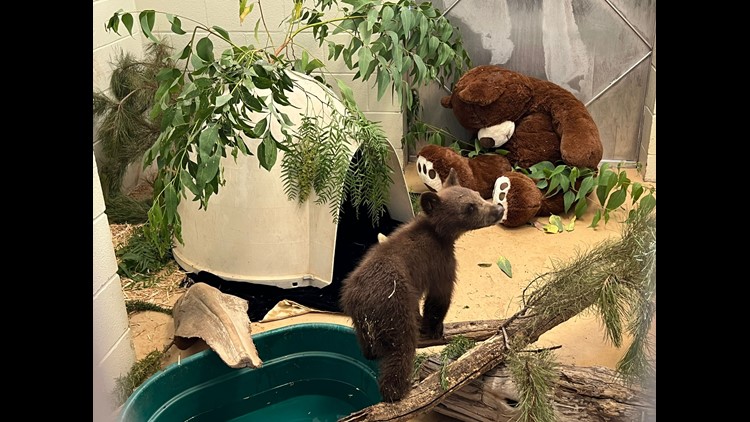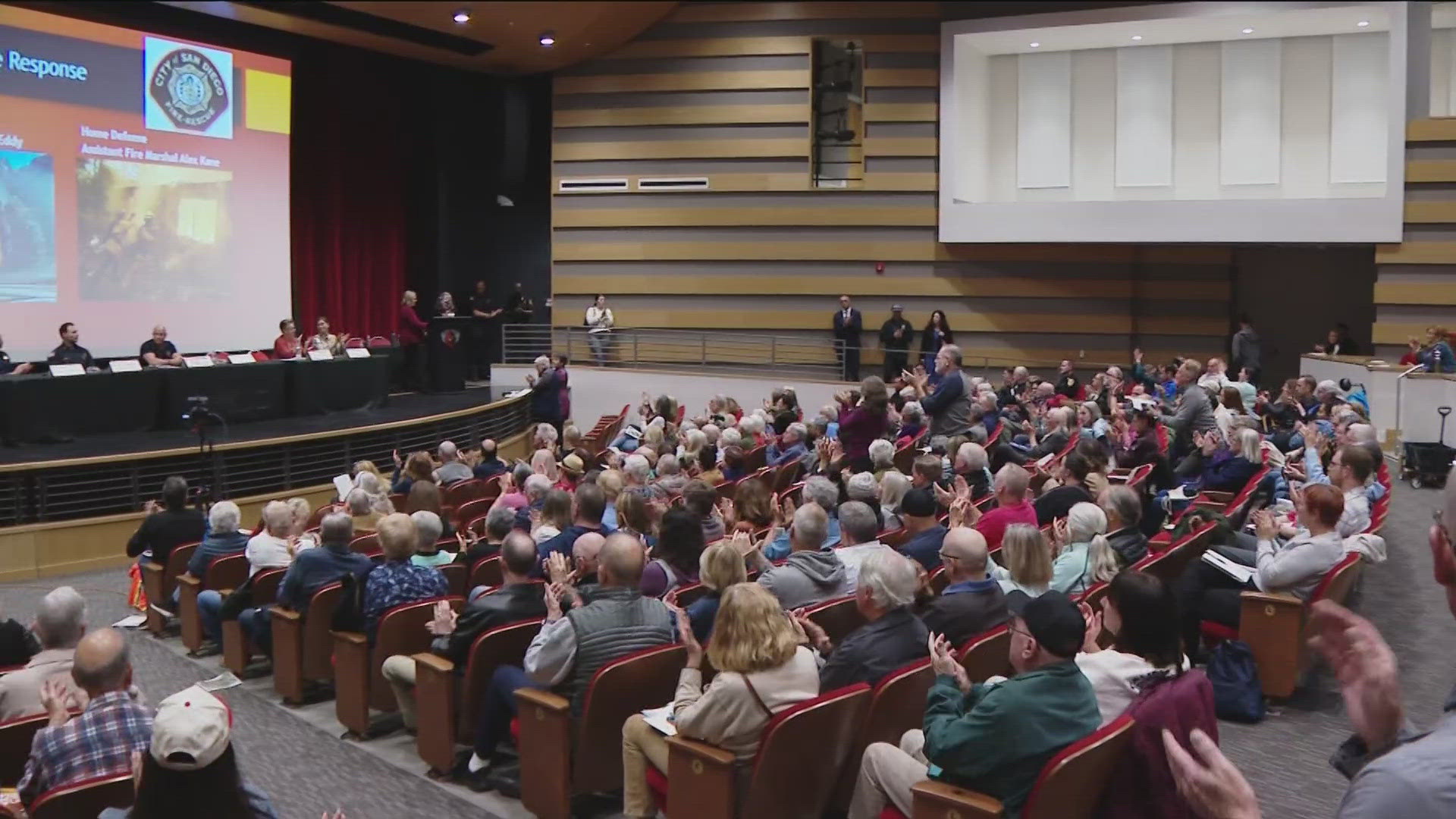RAMONA, Calif. — Two California black bear cubs who were rescued in the San Bernardino National Forest are being treated at the San Diego Humane Society's Ramona Wildlife Center.
The first cub was found near their dead mother on July 4 and the second smaller cub was found July 7.
The California Department of Fish and Wildlife began tracking the cubs once they located the dead mother.
"At only 5 months old, the bear cub brothers would have been too young to survive on their own," according to Nina Thompson of the humane society.
Black bear cubs typically need to stay with their mother, or sow, for up to 17 months, Thompson said.
Once reunited at the Ramona Wildlife Center, it was clear the brothers were happy to be together.
"They were vocalizing and immediately re-bonded with each other," said Andy Blue, campus director of the Ramona wildlife center. "Our goal now is to raise them with limited to no human interaction and get them ready to return to the wild."
The two cubs are housed in an indoor and outdoor medical facility, where Project Wildlife's animal caregivers have set up an environment with California live oak, pine, clover, mulberry branches, fruit tree branches, mulch, hummingbird sage, sumac, chamomile flowers and herbs.
The next steps include an anesthetized exam of each bear and, once ready, a move to a larger outdoor enclosure, allowing them to exhibit more natural behaviors. Project Wildlife's team hopes to return the bears to the wild early next year.
The Project Wildlife program is the primary resource for wild animal rehabilitation and conservation education in San Diego County. Each year, the humane society gives nearly 13,000 injured, orphaned and sick wild animals a second chance.
The Ramona campus specializes in caring for native apex predators, also known as top predators at the top of a food chain without natural predators of their own. It also specializes in birds of prey, including hawks, owls, eagles, coyotes, bears, bobcats and, under special authorization, mountain lions.



